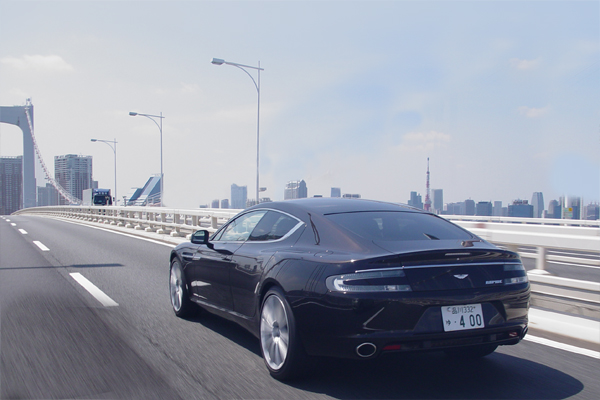If driving in Japan is driving you crazy, we hope the latest in our occasional series of guides to expat life could be a good starting point to getting you on the road…
Buying and owning a car in Japan – particularly in Tokyo – can be a tedious affair, but it does not have to be a hassle or a drama. The Weekender compiled the the information you’ll need to get your automotive experience running smoothly.
Shaken
If you’ve been looking to buy – or even already own – a car, shaken is a word you’ll get used to hearing… a lot. It’s actually an abbreviation of the term found on the Japanese road-worthiness document (see below). Every vehicle is required to undergo a legal inspection three years after the original purchase date, and every two years thereafter. That is, after the third, fifth and seventh year, and so on.
The road-worthiness test has two main aspects:
1. Road Worthiness Inspection Test (ji-dou-sha-ken-sa)
2. Government taxes: Compulsory Automobile Liability Insurance (ji-baiseki-ho-ken) and Vehicle Weight Tax (juu-ryo-zei).
These documents must be stored in the vehicle at all times: In the event of an accident, the forms will be subject to inspection by the traffic authorities or police. While shaken may seem expensive and overly strict, it is the key to the widespread availability of cheap, well-maintained, older or late model cars in Japan – it’s a meticulous maintenance schedule, making the country a gold mine for used cars. And it is actually in part because shaken is so expensive that there are some real bargains to be had out there.
Compulsory Inspection
This is a comprehensive inspection of the vehicle from a safety perspective. It inspects the essential safety apparatuses of the vehicle to ensure they comply with the required level of safe operation. It covers all the basics you’d expect: headlight and indicator lamps, wheel alignment, brakes, the speedometer, headlight beams, emissions test, suspension, steering, drive shaft, muffler, tires and oil leaks.
Weight Tax and Insurance
The Land Transport Authority collects a tax on automobile owners based not only on engine size but also on the weight of the vehicle. Insurance is required by law but it is a limited form of third party liability insurance, covering the driver of the car for physical injuries to a third party outside of the vehicle. Compulsory Insurance is basic, so comprehensive optional liability insurance is strongly recommended.
Parking in Japan
Something that often surprises first time car buyers in Japan is the necessity of getting a permanent – registered – parking spot before being allowed to get your hands behind the wheel.
One of the biggest expenses and hassles of owning a car in Tokyo, in fact, is seeking storage. If you are lucky enough to have parking included with your apartment or home, you are already halfway there. But if not, parking your car in Tokyo could run from around ¥30,000 to ¥60,000 a month, depending on where you live. At this point, are you wondering if “maybe it’s time for a really nice bicycle; something carbon and really sporty?” We’d almost agree, but it isn’t quite the same as cruising out of town for the weekend in the car, now is it?
Importing a Vehicle to Japan
Brits and Aussies particularly – they who drive on the left – often wish to bring their own vehicles to Tokyo, or buy from back home. This is certainly an option, but there are a few hurdles to jump. Customs clearance, modifications, compliance and registration are officially the responsibility of the owner.
Port handling – including fuel removal and battery disconnect, both necessary before a car can take to the waters – will need to be taken care of, not to mention the documents. This is something that almost anywhere in the world will mean finding a professional who can help – no least in Japan.
Japanese Highways
If you don’t have a registered ETC card, highways, bridges and tunnels – and you’ll need all of those if you are to fully enjoy your car and head to the country – are seriously expensive. A single crossing of the Tokyo Bay Aqua-line will cost you ¥3,000 (slightly lower for small slightly less for small vehicles/motorcycles) but with the card it’ll be ¥800. To get your card you’ll need to contact your credit card company.
It sits in a slot on your dashboard automatically communicating with sensors above the road and, traffic permitting, will make things all the swifter when you reach the toll gate.
To find out more about buying a car in the Kanto area, get in touch with JCE Autos.
Image: Aston Martin Rapide crossing Tokyo’s Rainbow Bridge by Nicholas Adams









